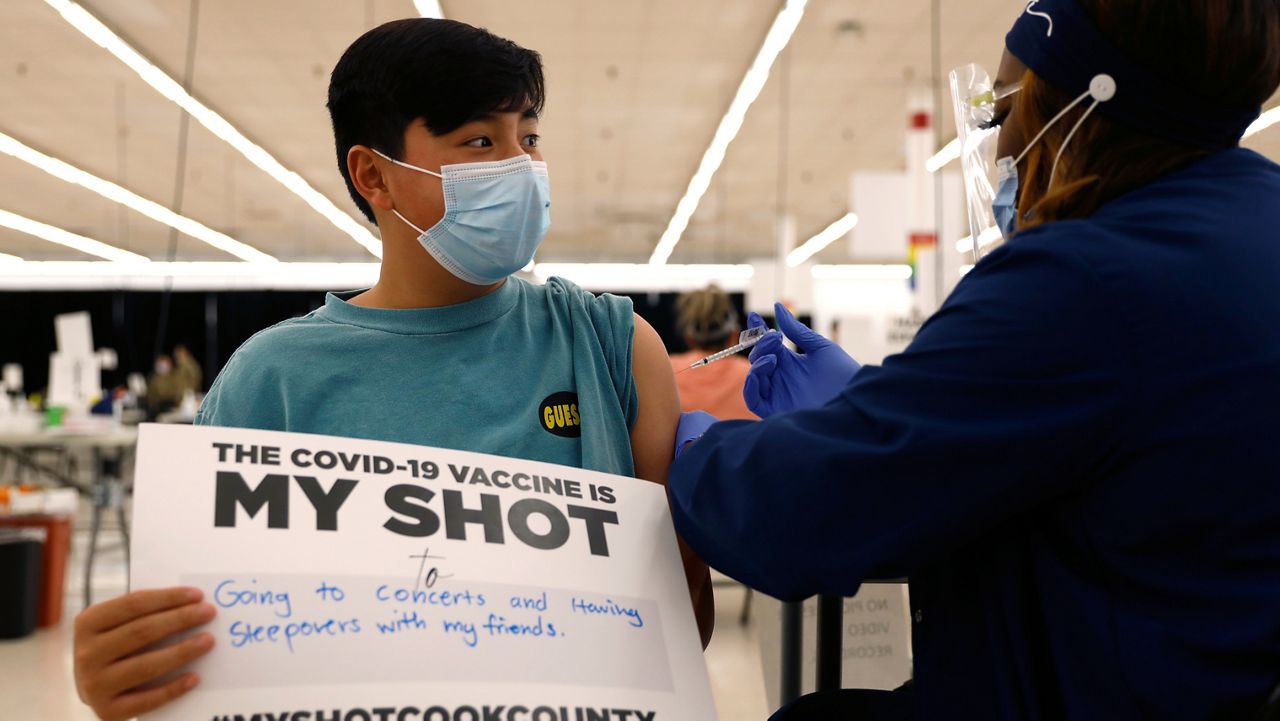CLEVELAND — The omicron variant is resulting in significantly less severe patient outcomes than the delta variant, according to Case Western Reserve University School of Medicine researchers who’ve released the first U.S. study comparing the disease severity of the two variants.
What You Need To Know
- U.S. virus patients had significantly less severe outcomes after the omicron variant emerged
- Case Western researchers reported declines in severity similar to studies from South Africa and Europe
- Pediatric hospitalization risk also declined, even among children too young to be vaccinated
The researchers compared the rates of severe outcomes among more than 14,000 people who contracted COVID-19 between Dec. 15 and Dec. 24 to outcomes from the fall period when the delta variant accounted for more than 99% of U.S. COVID-19 cases.
“We found that as omicron was rising, the proportion of adverse outcomes went down,” said Dr. Pamela Davis, dean emerita and Arline and Curtis Garvin Research Professor. “There's substantial difference in the rate of hospitalization, ER visits, mechanical ventilation and ICU admissions.”
The risk of hospitalization in the December period was less than half of what was observed during the fall, prior to the emergence of omicron. There was an even greater drop in more serious outcomes — ICU risk was one-third of that for the fall period, and the risk of mechanical ventilation was just one-sixth.
Davis expects the risk of severe outcomes will fall even further as omicron overtakes delta in prevalence. Because sequencing data shows the delta variant was still circulating in the December period the researchers studied, they believe it was responsible for many severe outcomes.
The authors caution that even though they have associated omicron with milder disease severity in the U.S., it remains possible that the sheer number of cases could lead to more strain on hospitals.
“Because of omicron’s increased transmissibility, the overall number of ER visits, hospitalizations, ICU admissions, and mechanical ventilator patients may still be greater with the omicron variant than the delta variant,” they wrote in their Jan. 2 preprint paper.
The researchers acknowledge that factors such as increased vaccinations, greater immunity in the population from prior infection and better therapeutics could account for declines in disease severity. However, they found that the risks of severe outcomes had not fallen, even in late November. The drop-off in December, which coincided with the emergence of omicron, was rather sudden, Davis said.
Professor of Biomedical Informatics Rong Xu said their results from U.S. data are very similar to findings of milder disease from South Africa, where the variant was first identified, as well as studies from England and Scotland.
“This is the first study in the U.S. comparing omicron to delta,” Xu said. “There’s consistency of findings from countries in other places in the world. In the United States, we’ve found the similar mild disease severity.”
Xu said they also found good news in their analysis of pediatric disease severity during the period when omicron was prevalent, with hospitalization rates and emergency department visits dropping significantly.
The drop in hospitalization risk was seen in all pediatric age groups, including children under five who are ineligible for vaccination and younger school-age kids who were ineligible for boosters.
“Across the country, there are a lot more little kids getting infected because this thing is going like wildfire, but once infected, those kids didn't have the severe consequences to the extent that they did during the delta period,” Davis said. “As someone who has at least one grandchild who is not eligible for vaccination yet, I'm saying, ‘Thank you, God.’”
The study evaluated electronic health records from a nationwide database that receives data from large health care systems. It focused on the early period after infection — the first three days — and the paper did not evaluate mortality risks, which will take more time to analyze.






